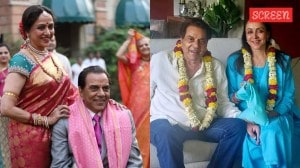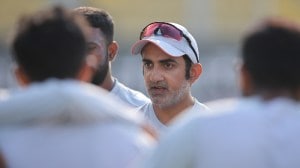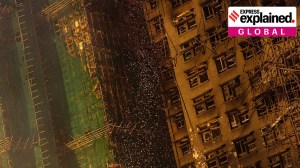Maha Shivratri literally translates to ‘the great night of Shiva’. The celebration blends the social with the spiritual, and is observed in many different ways across the country. We take a look.

Story of Maha Shivratri
The most popular belief is that this is the night Lord Shiva married Goddess Parvati, a form of Shakti. Shiva temples are decorated, and devotees stay up all night in celebration of the wedding.
Many Hindu festivals merge the divine with the everyday, with devotees participating in the births and weddings of their Gods. But behind the literal often lies a deeper spiritual significance. Thus, the wedding of Shiva and Shakti is a union of consciousness and life force, necessary for a balanced and productive life.
“The story of Maha Shivratri being the night Shiva married Parvati is understandably popular. But there are other reasons too that make this day significant,” Girija Shankar Shastri, head of the Department of Jyotish at Banaras Hindu University, told The Indian Express.
“One version, found in the Ling Purana, is that this was the day that Shiva took the form of a jyotirlinga, or a cylinder of light. The linga was so enormous that Lord Brahma on his swan and Lord Vishnu on his Garud set out to discover its origin and end, but failed. Shiva, thus, is boundless, transcendental energy, without a beginning or an end,” Shastri said.
“The other reason,” Shastri said, “is that this day, the 14th day of the Phalgun krishna paksha, is specially dear to Lord Shiva, and worshipping him that day brings great spiritual benefits.” Lord Shiva wears the crescent moon on his forehead, which is similar to what the moon looks like on Maha Shivratri.
Story continues below this ad
D P Dubey, retired professor of ancient history at the University of Allahabad and General Secretary of the Society of Pilgrimage Studies, also mentioned the Puranic tale about Brahma and Vishnu worshipping the linga.
He added, “The worship of the Shivling in India has been around since the Indus Valley Civilisation, as shown by the discovery of a Shivlinga at the Indus Valley site of Kalibangan in Rajasthan.”
Haerath: Maha Shivratri in Kashmir
Maha Shivratri is a major festival in the Shaivya tradition of Kashmir, and Hindus in Kashmir have their own beliefs about the festival. The festival is called “Har Ratri”, shortened to Herath or Haerath in Kashmiri, and is celebrated a day before the rest of the country.
Utpal Kaul, a historian from Kashmir, explained, “In Kashmir, the worship of Shiva is linked to his Bhairav form, and it is believed that various Bhairavas guard the state. On Herath, it is believed, Shiva appeared in a fierce form as a blazing column of light (jwal-linga), and Vatuka Bhairava and Ramana Bhairava tried to calm him. Thus, they too are worshipped on this night. Since they are believed to be children, they are given a sumptuous feast.”
Story continues below this ad
Ananda Tandava in Tamil Nadu
Another distinct tradition associated with Maha Shivratri is at the Chidambaram Nataraja temple in Tamil Nadu.
It is believed that Shiva performed the ‘Ananda Tandava’ on this day, and thus a grand dance festival is organised at the temple every year on Maha Shivratri. The Ananda Tandava is again linked to energy and the forces sustaining life.
Jadzia Donatowicz, dancer and astrophysicist at Technical University of Vienna, wrote in a 1996 research paper (Symbolism of the Cosmic Dance of Shiva in the South-Indian Temple Dance Tradition, Leonardo, Vol. 29, No. 2), “…The Ananda Tandava is Shiva’s dance within the heart of man. His dancing limbs convey by their movements and symbols Shiva’s fivefold action of creation, maintenance, dissolution, veiling-unveiling and liberation. The raised leg shows the liberating freedom of his dance, the drum raised by the right hand sounds the note of creation, the flame in the left hand flickers in the change brought about by destruction, the right hand grants protection and assures the maintenance of life.”








































